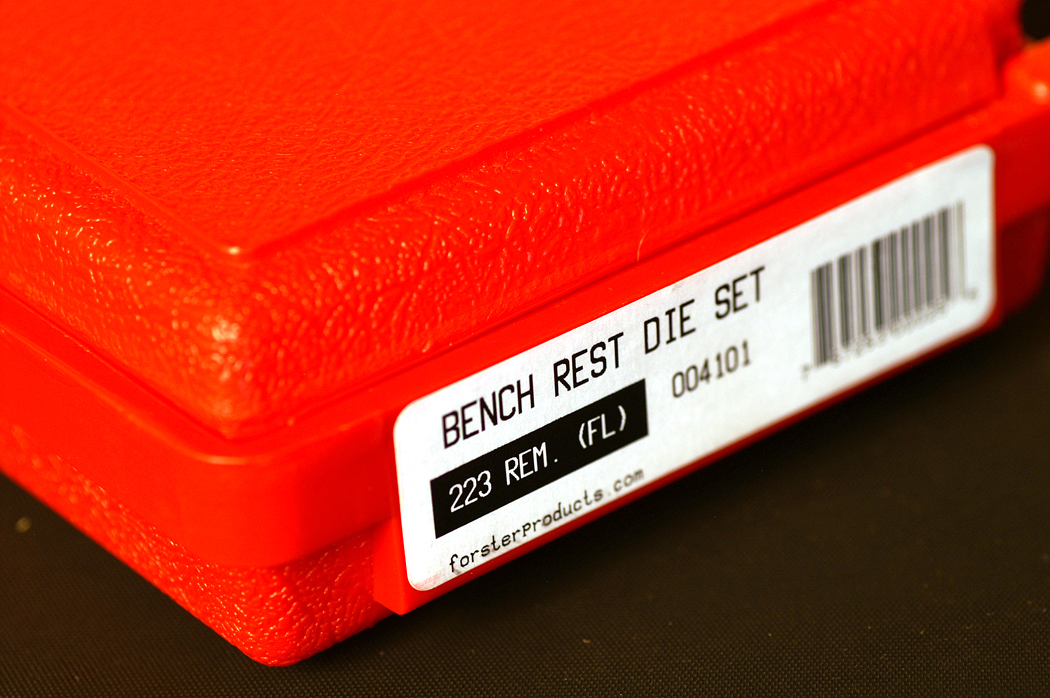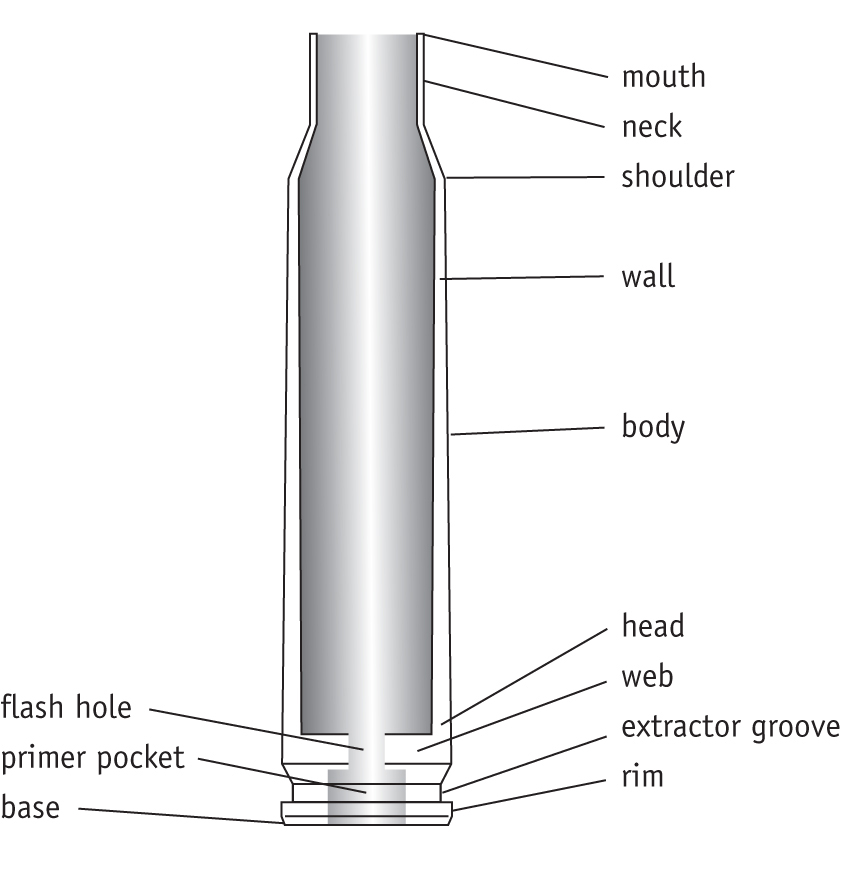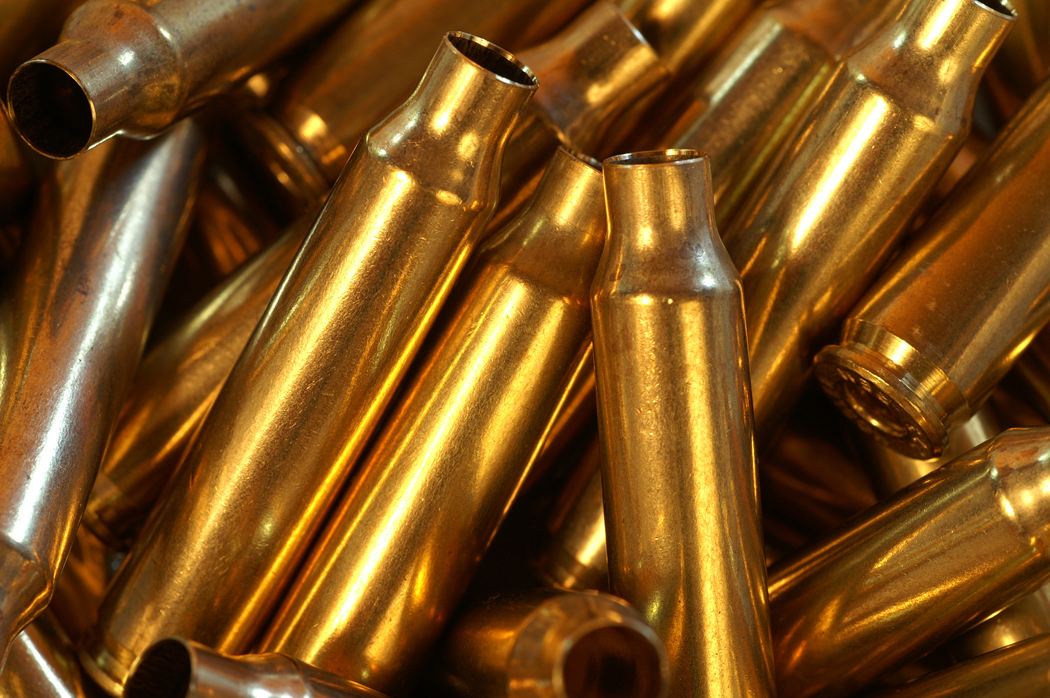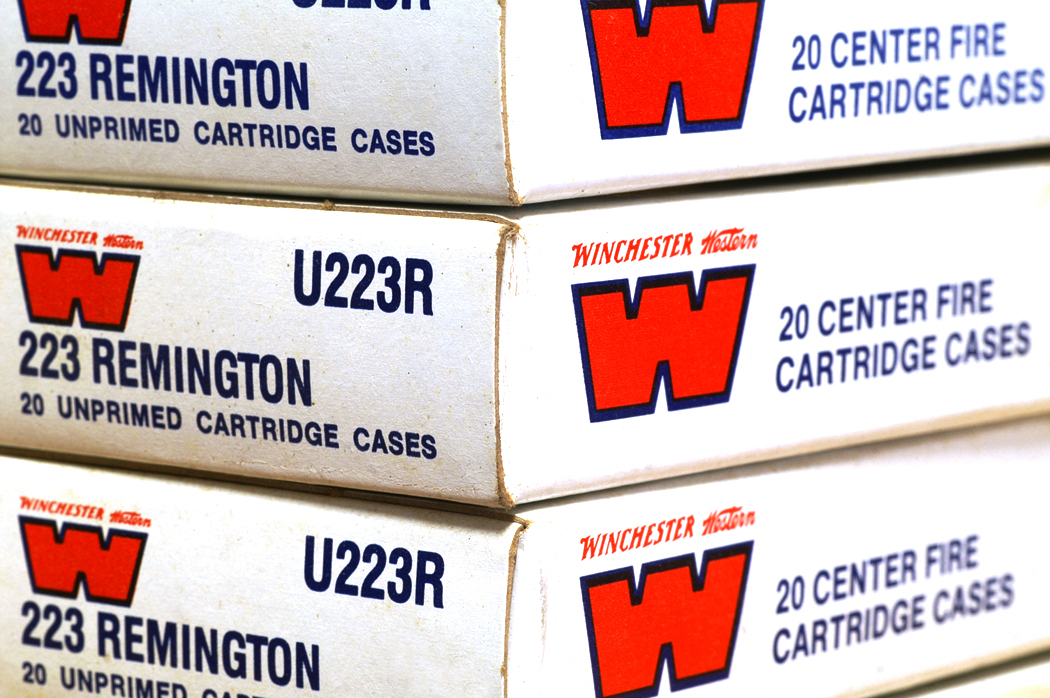The following is a specially-adapted excerpt from the forthcoming book,” Top-Grade Ammo,” by author Glen Zediker, owner of Zediker Publishing. Click here to order.
Bear with me! We’ll get started on the process of handloading next time when I talk about setting up a sizing die. But before that, it’s good to keep in mind what we’re dealing with, and that is a cartridge case, and also what happens to it during firing, which is what we’re setting out to remedy when we reuse it.
Rifle cartridge cases are made of brass, well, the reusable cases are (they can and have been made from steel and aluminum). There are no brass mines; brass is an alloy composed of copper and zinc and sometimes tiny amounts of other metals, like lead. The mix is usually about 70/30 copper to zinc. Different manufacturers use a different mix or blend, and that influences the nature of the material, and more about that shortly.
When a round is fired, here’s what happens.
When the firing pin or striker point contacts the primer, the cartridge is driven forward into the rifle chamber (as far as it is able to go).
When the primer detonates and its flame enters the cartridge-case flash hole to ignite the propellant, gases are produced that begin to expand the case.
As the propellant is consumed, gas pressure increases, the case head is driven backward against the bolt face, and the case neck and case shoulder are pushed forward as the case neck expands to release the bullet. The case essentially swells up like a balloon to fit the chamber, to the limits of the chamber, and this expansion is in all directions. So the back of the case is pushed into the bolt face and the front area is pushed or blown forward, while, during this, the case body is sealing (essentially sticking to) the chamber walls.
A cartridge case begins to contract just about immediately after it expands. The firing process takes scant milliseconds. Brass is both elastic and plastic. “Elastic” means it will stretch and contract. “Plastic” means it will stretch and stay. The elastic quality makes it expand and seal the chamber and then shrink back enough to be removed or extracted from the chamber. Plastic qualities mean it will also have sustained permanent change. Well, some of it isn’t really permanent because it can be changed again using tools, but some changes are permanent, whether they are literally smoothed over or not. Some cases tend to be harder — less plastic and less elastic — and that is almost always good, or so I say. It’s easy to see that since brass used in a semi-auto has to deal with at least some premature bolt unlocking, a harder composition is less “sticky” in extraction. Even for a bolt-gun, though, harder alloy tends to be smoother cycling. In a semi-auto, case life is strongly influenced by brass composition, and the harder the longer.
Thinking about what happened to the case, what it went through, during firing means we can anticipate the results and effects of dimensional changes. The areas of the chamber that have the greatest dimensional difference between those and the loaded round will have the greatest influence on the dimensions of the spent or fired case. Specifically, the spent case neck will now be too oversized to hold a bullet in place. The case shoulder will have lengthened (elevated if we’re standing the case on its bottom). The case body will have gotten larger in diameter. The case will also have lengthened overall (more about this in another article). What else? Some case material will have moved forward (brass flows in firing) toward the case neck. This material will have come from the area around the case head. The primer pocket will be larger in diameter.
Each firing, brass gets harder overall. In the areas where it expands the most, it gets even harder as it is “worked” through expanding and then being contracted. The tools we use to restore dimensions, the sizing die for good instance, create the contraction. And as suggested, the wall area near the case head gets thinner and the case neck walls get thicker.
All this means quite a bit to the handloader. First, get a clear picture of what’s happened to the spent cartridge case. Essentially, it’s expanded to more closely match the chamber dimensions. Of course, that means different spent-case dimensions from different chambers. Likewise, not all brass cases expand, or stay expanded, in the same way.
Case capacity, by the way, isn’t always as important as it might seem. Greater volume does mean more room for propellant, and expanding gases. With faster to medium propellants, it’s a “trade,” in a way of looking at it. A little less propellant in a little smaller capacity case nets about the same as a little more propellant in a little larger capacity case. Pressure and velocity will be about the same, either way. Now, in larger cartridges, and also often with double-base propellants in any size cartridge, more internal volume will very often mean more velocity at suitable pressure. Point is, don’t worry too much about more or less case capacity in .223 Rem. or .308 Win. I think the alloy composition is more important.
Now we can get started on patching them back up for another use…












